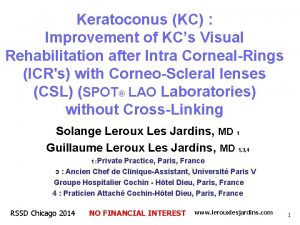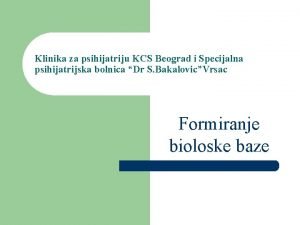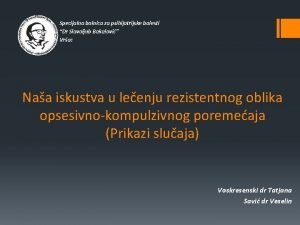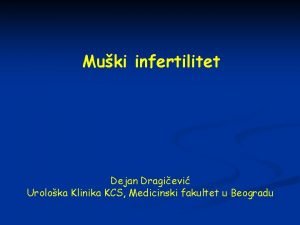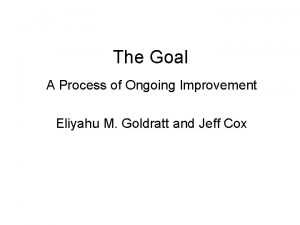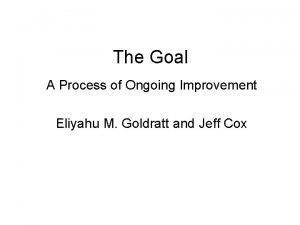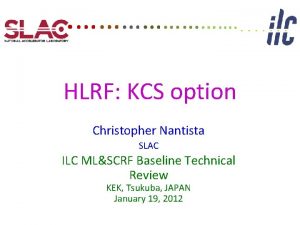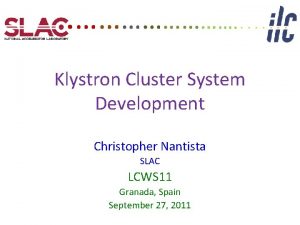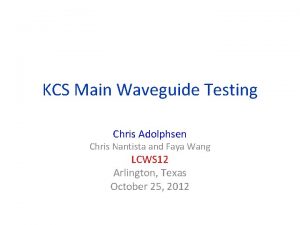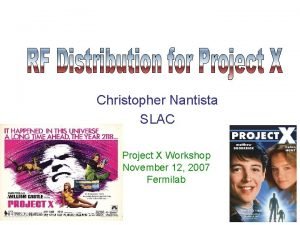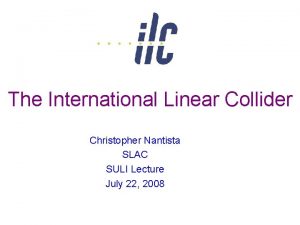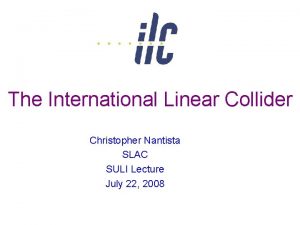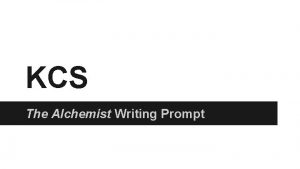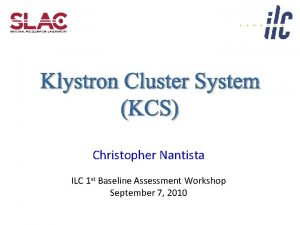KCS Ongoing RD Christopher Nantista SLAC LCWS 11










- Slides: 10

. …………. KCS Ongoing R&D Christopher Nantista SLAC LCWS 11 Granada, Spain September 29, 2011

Where We Are An 11. 5 m prototype run of TE 01 -mode circular waveguide has been tested in resonant-line mode, using a CTO as an input coupler, up to ~300 MW TW equivalent peak fields (~75 MW each way SW). After addressing a flange gap problem, we achieved stable operation at ~18 psig pressurization.

What’s Next (1) Transmission Test: We are installing our second CTO at the far end of the line, replacing the shorting plate. Both CTO’s will be fitted with end caps of the proper depth to make them launchers (i. e. designed for full coupling), and high-power loads will be installed on the rectangular outputs of the end CTO. The input match will be measured, followed by high-power running up to ~4. 2 MW available from our Thales klystron. Transmission and reflection will be measured with directional couplers at the input and output. Tests will be repeated with a 1/4 -wave spacer inserted in the pipe. If necessary, NWA cold tests of the CTO’s back-to-back can be repeated, w/ & w/o spacer, to verify tuning of the shorting caps for optimized transmission.

What’s Next (2) Breakdown Studies: Earlier runs showed a breakdown dependence on pressure. We may explore the limit by lowering the pressure and/or raising the power and trying to pinpoint what breaks down — the input WR 650 waveguide, the CTO, or the TE 01 mode in the “big pipe”. To this end, we plan to install acoustic sensors, a TE 01 -sensitive antenna, and perhaps a camera looking in through a hole in the end plate. TE 01 Bend: When the TE 01 90 bend is fabricated, it can be cold tested using the transmission optimized CTO launchers. For highpower testing, it will be inserted into the KCS waveguide run and transmission and resonant tests will be repeated.

Coming Up Big Long Pipe: We’ve placed an order for ~80 m more KCS main waveguide (WC 1890) for a longer installation. While still short compared to runs in an ILC KCS, this will allow us to evaluate longer range transmission. The main motivation for this extension of our experimental setup was to verify that nothing bad happens when more stored energy is available to a breakdown. Resonating this line up to the same field level (300 MW TW-equiv. ) will require more power, but we should have enough from our Thales tube with moderate overcoupling to broaden the resonance. … ~80 m

Long KCS Waveguide Support We are building a mezzanine in End Station B at SLAC, running back into the tunnel, to support our extended “big long pipe” experiments.

Recommended CTO Testing and Development: It is important for KCS that we be able to accurately achieve desired CTO couplings. With only two 3 d. B CTO’s, we cannot directly test their couplings. With both of them employed as matched launchers, we’ll have a test bed into which we can insert other CTO’s to measure their match and extracted power. We should plan to build at least a couple more to do this. We might also try to develop a method to experimentally fine-tune CTO’s as a step in the fabrication process.

Future Aspiration KCS Waveguide Resonant Ring: With a resonant ring, we could build up actual rf power levels required in an ILC KCS in a TW mode. This would allow more realistic demonstration and testing of waveguide and components. It would require using our 10 MW Toshiba MBK and likely a second klystron. It would also require a 4 -port directional coupler capable of driving it in the TE 01 mode and, ideally, a diagnostic directional coupler to measure power level and directionality. One can imagine adding a tap-off/tap-in CTO-based assembly, as shown, to test their functionality and power handling. directional coupler phase shifter 160 m of WC 1890 300 MW tap-off tap-in

Resonant Ring Turn-Around U-bend configuration of high-power TE 01 bend for resonant ring. 33. 420” 2. 045” 7. 315” 30. 195” gaskets

160 m Resonant Ring in ESB



